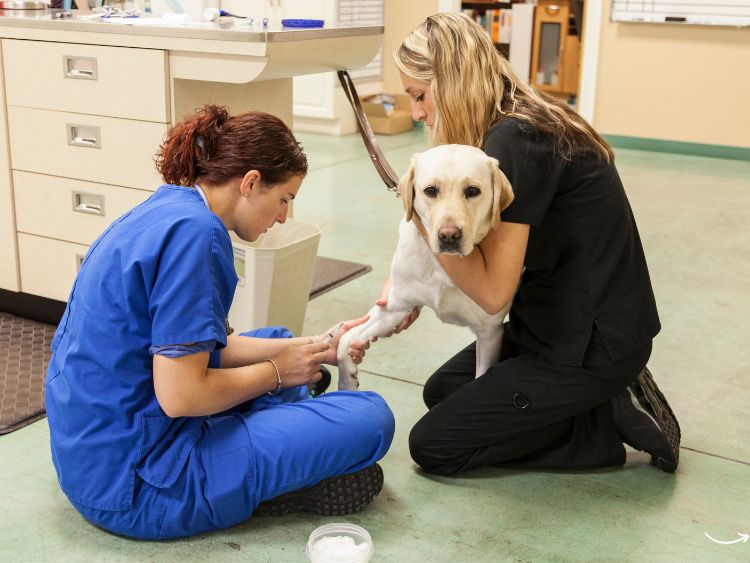Welcome to the wonderful world of animal care sanctuaries! Have you ever wondered what it takes to run a safe haven for animals in need? Well, you’ve come to the right place. In this comprehensive guide, we’ll dive deep into what an animal care sanctuary is, why they are essential, and how you can contribute to their mission. So, grab a cup of coffee, get comfortable, and let’s explore the heartwarming and sometimes challenging realm of animal care sanctuaries.
What is an Animal Care Sanctuary?
An animal care sanctuary is a refuge where animals, often rescued from dire situations, can live out their lives in peace and safety. These sanctuaries provide a haven for animals that have been abandoned, abused, or neglected. Unlike shelters, which may adopt out animals, sanctuaries typically offer lifelong care.
Key Features of an Animal Care Sanctuary
- Safe Environment: Sanctuaries prioritize the safety and well-being of their residents, ensuring they are free from harm.
- Lifelong Care: Animals receive care for the rest of their lives, without the stress of being rehomed.
- Rehabilitation: Many sanctuaries focus on rehabilitating animals, helping them recover from trauma and injuries.
- Education: They often educate the public about animal welfare and the importance of compassionate treatment.
Why Are Animal Care Sanctuaries Important?
Animal care sanctuaries play a vital role in society. They not only save lives but also advocate for animal rights and welfare. Here are some reasons why these sanctuaries are crucial:
- Rescue and Rehabilitation: They save animals from abusive situations, offering them a chance to heal and thrive.
- Education and Advocacy: By raising awareness, sanctuaries promote better treatment of animals and push for legislative changes.
- Biodiversity Conservation: Some sanctuaries focus on endangered species, contributing to the conservation of biodiversity.
- Emotional Healing: Animals in sanctuaries often come from traumatic backgrounds. The care they receive helps them regain trust and happiness.
How Do Animal Care Sanctuaries Operate?
Running an animal care sanctuary is no small feat. It requires a blend of passion, dedication, and meticulous planning. Here’s a peek into the daily operations:
Funding and Resources
- Donations: Many sanctuaries rely heavily on donations from the public.
- Grants: They often apply for grants from animal welfare organizations.
- Fundraising Events: Hosting events like charity runs, auctions, and galas help raise funds.
Daily Care
- Feeding: A balanced diet tailored to each animal’s needs.
- Medical Care: Regular veterinary check-ups and emergency care.
- Enrichment Activities: Activities that stimulate the animals mentally and physically.
Volunteers and Staff
- Dedicated Team: A mix of paid staff and volunteers who handle everything from feeding to cleaning and administrative tasks.
- Training: Continuous training ensures that the team can provide the best possible care.
Challenges Faced by Animal Care Sanctuaries
Running a sanctuary is incredibly rewarding but comes with its set of challenges:
Financial Strain
Keeping up with the costs of food, medical care, and maintenance can be overwhelming. Many sanctuaries operate on tight budgets and rely on the generosity of donors.
Space Constraints
As the number of animals increases, so does the need for space. Expanding facilities requires significant funding and planning.
Emotional Toll
Caring for traumatized animals can be emotionally taxing for staff and volunteers. The constant demand for empathy and resilience can lead to burnout.
Regulatory Compliance
Sanctuaries must comply with various regulations and standards, which can be complex and time-consuming to navigate.
How You Can Help
Want to support an animal care sanctuary? There are several ways you can make a difference:
Donations
- Monetary Contributions: Every dollar helps in providing care and improving facilities.
- Supplies: Donating food, bedding, and medical supplies can ease financial burdens.
Volunteering
- Time: Helping with daily tasks or special projects.
- Skills: Offering your expertise, whether it’s veterinary skills, marketing, or administration.
Advocacy
- Raise Awareness: Spread the word about the sanctuary’s work through social media or community events.
- Support Legislation: Advocate for laws that protect animals and support sanctuaries.
Inspiring Success Stories
Luna’s Journey to Recovery
Luna, a mistreated horse, was rescued by a sanctuary in Texas. Severely malnourished and frightened, Luna slowly regained her health and confidence thanks to the sanctuary’s dedicated care. Today, she enjoys her days grazing in open fields, a testament to the sanctuary’s life-changing work.
Rescued from the Brink: Bella the Dog
Bella, a dog rescued from an abusive home, found her forever home at an animal care sanctuary. Once fearful and aggressive, Bella transformed into a loving, playful companion, proving the sanctuary’s incredible impact on her well-being.
FAQs about Animal Care Sanctuaries
What is the difference between a shelter and a sanctuary?
Shelters typically house animals temporarily until they can be adopted. Sanctuaries provide lifelong care for animals, especially those who may not be adoptable due to medical or behavioral issues.
How do sanctuaries fund their operations?
Sanctuaries rely on donations, grants, and fundraising events to cover their expenses.
Can I visit an animal care sanctuary?
Many sanctuaries welcome visitors and offer tours to educate the public about their work. It’s best to check with the specific sanctuary for visiting hours and guidelines.
How can I start my own animal care sanctuary?
Starting a sanctuary involves thorough planning, securing funding, and understanding the legal requirements. Volunteering at existing sanctuaries can provide valuable experience and insights.
Conclusion
Animal care sanctuaries are beacons of hope and compassion, providing refuge and rehabilitation for animals in need. By supporting these sanctuaries, whether through donations, volunteering, or advocacy, you can help ensure that animals receive the love and care they deserve. Remember, every little bit helps in making the world a better place for our furry, feathered, and scaly friends.
Authoritative Links
Here are some authoritative links related to animal care sanctuaries:

